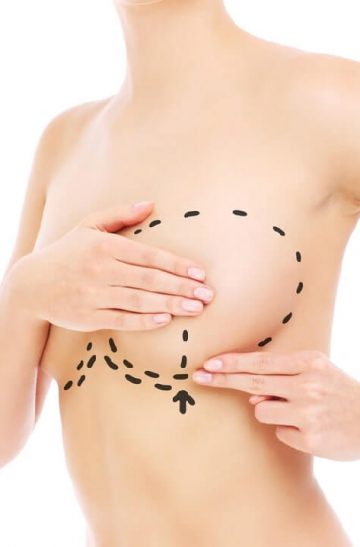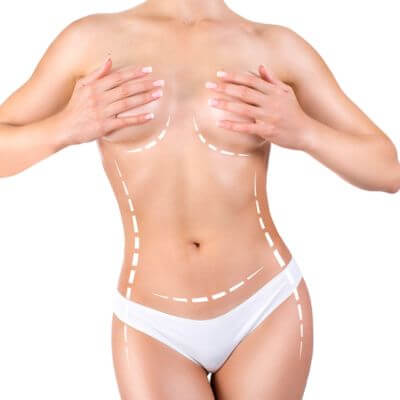Breast lift
The result for our customers
Book a FREE 3D consultation and we will show the results of our patients who are close to your personal case
To book your consultation or find out detailed prices, please fill out the form
Do a Breast Lift at Aesthetics Clinic Geneva
When to do a Breast Lift or Mastopexy?
A combination of the two. Mastopexy with breast augmentation?
Breast surgery to lift the breasts
In certain cases of minimal breast ptosis, correction can be carried out exclusively through a periareolar incision. In cases where ptosis is associated with volume deficiency alone, correction can be achieved through the use of breast implants.
A breast reduction can be performed from the end of puberty. A new pregnancy and breastfeeding are still possible, but we advise waiting at least six months after the procedure. The risk of cancer is not increased.
Whether you suffer from sagging breasts following pregnancy, weight loss or simply age, a breast lift may be right for you. By tightening the tissue around the areola and nipple, it can give your breasts more shape and volume, while also lifting them up your chest.
Psychological Effects of Breast Lift
Breast lift basics?
Breast surgeries compared?
Post-operative pain after a breast lift
First consultation
with 3D simulation
in Geneva, Gstaad and Montreux
Fill out the form to request the free consultation
Go to formFirst consultation
with 3D simulation
in Geneva, Gstaad and Montreux
Première consutation
avec simulation 3D
à Genève, Gstaad et Montreux!
Fill out the form to request the free consultation
Go to formType of breast lift with and without scars and treatment methods

Vertical techniques

Peri-areolar incisions
After excision of excess skin, the residual glandular volume is reorganized, concentrated and remodeled. The skin envelope is adapted to the new size and shape. Often, the resulting scars look like an inverted “T” with three components: a periareolar scar (around the nipple), a scar running down from the areola to the crease under the breast, and a horizontal scar (not always necessary) located in the crease. breast.

Pure ptosis
Scars
We use absorbable sutures, however, if non-absorbable sutures have been used, they will be removed 10 days after the procedure. It is advisable to consider convalescence leave of 8 to 15 days.
Working time
A usual preoperative assessment is carried out in accordance with federal rules. The anesthetist will see you no later than 48 hours before the procedure.
In addition to the usual preoperative examinations, certain imaging examinations may be prescribed (mammography, ultrasound). Medications containing aspirin should be stopped at least 10 days before the procedure.
Result
The final result can only be judged one year after the operation: the shape of the breast is then generally harmonious and symmetrical or close to symmetry. However, most patients are very satisfied during the immediate postoperative period
What is the difference between a breast lift and a breast augmentation?
A breast lift breasts, or mastopexy, is a surgical procedure that aims to lift and reshape sagging breasts to give them a more youthful and toned shape. It does not necessarily change the size of the breasts, but improves their position and shape. Breast augmentation, on the other hand, involves the insertion of implants to increase breast volume. These two procedures can be combined if the patient wishes to both lift her breasts and increase their size.
What can I expect in terms of results after a breast lift?
The result of a breast lift is generally firmer and better positioned breasts. The chest has a more youthful appearance with improved shape and contour. Results are visible immediately, although the final result is often not assessed until the swelling and bruising has completely disappeared, usually a few months after the operation
How long is the recovery time after a breast lift?
Recovery after a breast lift varies by individual, but patients should generally plan to take at least a week off. During the first few days, it is common to experience moderate pain which can be controlled with medication. It is important to wear a support bra for several weeks after surgery to help with healing and the formation of the new shape of the breasts.
When can I return to sport after a breast lift?
It is recommended to avoid strenuous exercise for at least four to six weeks after a mastopexy. Light activities, such as walking, can be resumed relatively early to promote circulation, but exercises involving impact or sudden movements, such as running or lifting heavy weights, should be avoided until the surgeon gives his agreement.
Is there any special care to follow after a breast lift?
Yes, it is crucial to follow post-operative instructions provided by your surgeon. This includes taking care of the incisions, maintaining good hygiene, and wearing the prescribed special bra. Regular follow-ups with the surgeon are essential to monitor healing and discuss any potential problems. Avoid direct sun exposure to scars for several months, as this can affect their appearance.















